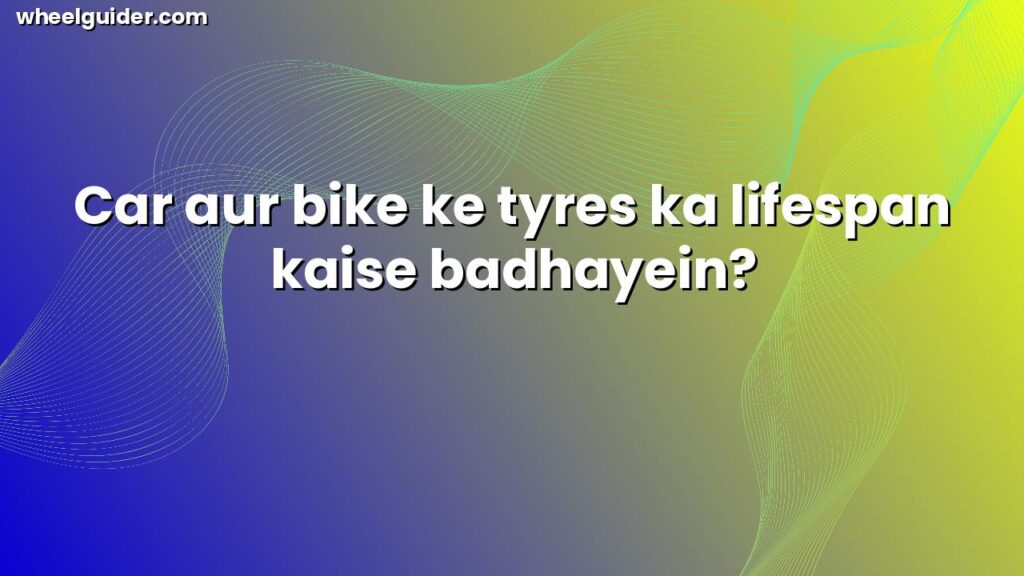Imagine this: you’re cruising down the highway, enjoying the open road, and *bam!* A sudden jolt. You pull over, only to find a flat tire. Frustrating, right? But what if I told you there’s a system that can warn you about low tire pressure *before* you even feel that jolt? That’s the magic of a Tyre Pressure Monitoring System, or TPMS, for short. Aaj hum iske baare mein detail mein jaanenge – simple language mein, bilkul beginner ke liye! So, let’s dive in and understand how this amazing technology works.
TPMS kya hai? (What is TPMS?)
Simply put, a TPMS is like a tire’s personal bodyguard. It’s a system that constantly monitors the air pressure in your car’s tires. Think of it as a super-smart pressure gauge, always on duty. If the pressure drops below a certain level, it alerts you – preventing potential accidents and saving you a lot of hassle. Kabhi socha hai aapke car ke tyres mein kitna pressure hona chahiye? TPMS exactly yeh check karta hai!
Direct aur Indirect TPMS – Do types ke hote hain!
There are two main types of TPMS: Direct and Indirect. Let’s break them down:
- Direct TPMS: Imagine tiny sensors living inside each tire. These sensors constantly measure the pressure and temperature. They then wirelessly transmit this data to a receiver in your car. This receiver then displays the information on your dashboard – simple and effective! Yeh thoda expensive hota hai but super accurate hai.
- Indirect TPMS: This type doesn’t use sensors inside the tires. Instead, it relies on your car’s existing ABS (Anti-lock Braking System) sensors. These sensors monitor the rotation speed of each wheel. If one tire has lower pressure, it will rotate slightly faster than the others. The system detects this difference and alerts you. Yeh direct TPMS se zyada economical hai, but accuracy thodi kam ho sakti hai.
Kaise kaam karta hai? (How does it work?)
Let’s imagine a scenario. You’re driving your car, and one of your tires is slowly losing air. Here’s what happens with a Direct TPMS:
- The sensor in the low-pressure tire detects the drop in pressure. It’s like a tiny detective on the job!
- The sensor sends a radio signal to the receiver in your car. This signal carries the tire pressure and temperature data.
- The receiver processes the data and displays a warning on your dashboard. This could be a simple light, a visual display of the pressure in each tire, or even a specific warning message like “Low tire pressure in the front left tire!”
With an Indirect TPMS, the process is slightly different:
- The ABS sensors detect a difference in wheel rotation speed. One tire is spinning a bit faster due to lower pressure.
- The car’s computer system calculates this difference. It figures out which tire has low pressure.
- A warning light appears on your dashboard. You’ll know to check your tires!
Kyun zaroori hai? (Why is it important?)
A TPMS is not just a fancy gadget; it’s a crucial safety feature. Low tire pressure can lead to:
- Reduced fuel efficiency: Under-inflated tires increase rolling resistance, meaning your car needs to work harder, and you’ll burn more fuel. Aapke paise bachenge!
- Uneven tire wear: This leads to premature tire damage, costing you more money in the long run. Expensive tyre change se bachao!
- Reduced handling and braking: Low tire pressure makes your car harder to control, increasing the risk of accidents. Safety pe compromise nahi!
- Blowouts: A severely under-inflated tire can blow out completely, leading to a dangerous situation. Accidents se bachenge!
Maintenance aur Tips (Maintenance and Tips)
While TPMS is a great system, it’s not a magic bullet. Regular tire maintenance is still essential:
- Check your tire pressure regularly: Even with a TPMS, it’s a good idea to check your tire pressure manually once a month, or before a long trip. Use a reliable pressure gauge.
- Check your TPMS sensors: Make sure the battery in your TPMS sensors is working correctly. Most sensors have a battery life of around 5-10 years. Agar light on nahi ho raha hai toh check karana jaruri hai!
- Get your tires rotated and balanced: Regular tire rotation and balancing ensures even wear and tear, maximizing the lifespan of your tires.
In conclusion, a TPMS is a valuable asset for any car owner. It adds an extra layer of safety and helps you maintain your tires properly, ultimately saving you money and preventing potential accidents. So next time you’re buying a car, make sure to check if it has this amazing feature! Humne aaj simple language mein TPMS ke baare mein seekha – yeh aapke liye helpful raha hoga!


